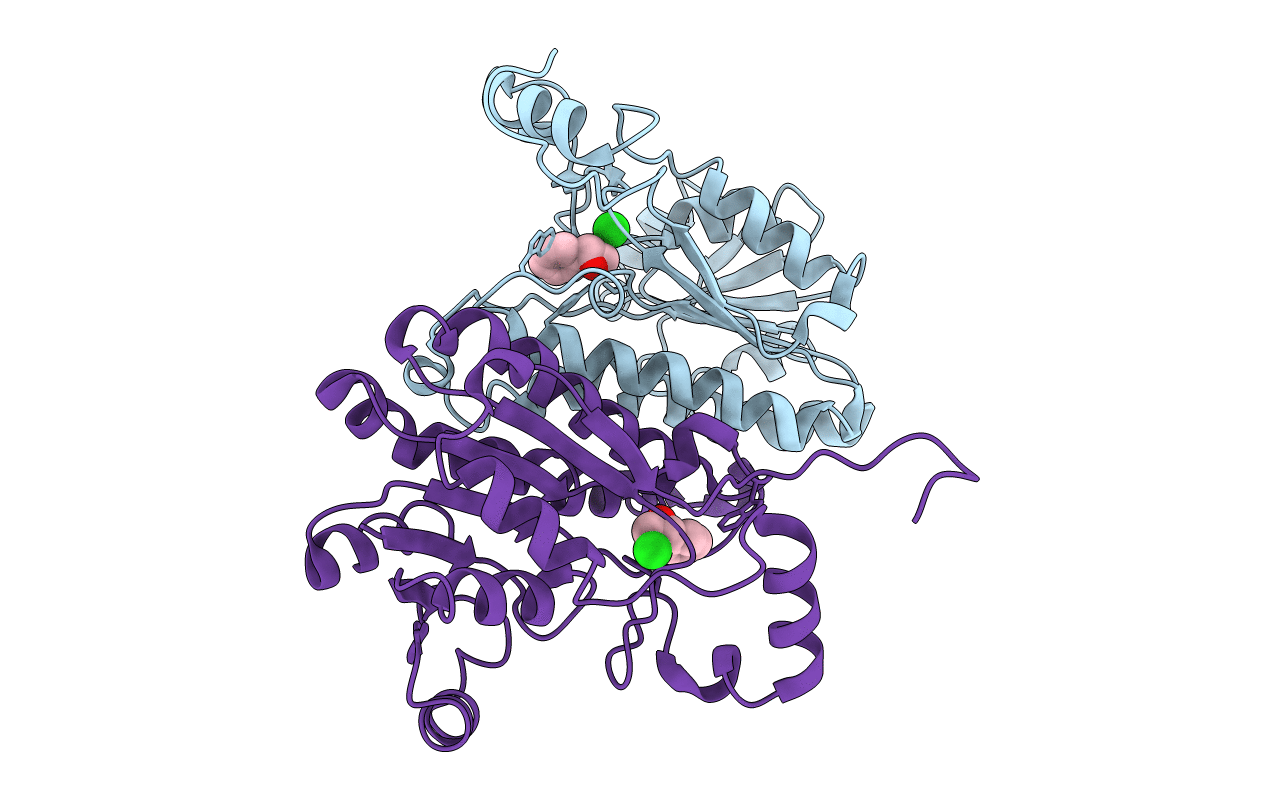
Deposition Date
2003-07-02
Release Date
2003-10-07
Last Version Date
2023-08-16
Entry Detail
PDB ID:
1PWZ
Keywords:
Title:
Crystal structure of the haloalcohol dehalogenase HheC complexed with (R)-styrene oxide and chloride
Biological Source:
Source Organism:
Agrobacterium tumefaciens (Taxon ID: 358)
Host Organism:
Method Details:
Experimental Method:
Resolution:
2.50 Å
R-Value Free:
0.27
R-Value Work:
0.22
R-Value Observed:
0.22
Space Group:
P 43 21 2


